12 weird but true facts about technology
- Get link
- X
- Other Apps
Zeeshan Mir Baz has collected the information from this website:https://economictimes.indiatimes.com/slideshows/tech-life/panasonic-eluga-turbo-one-of-the-few-good-5-inch-smartphones-available-at-the-price/verdict/slideshow/51390943.cms in this article said that:
Updated: 16 Mar 2016, 06:44 AM IST
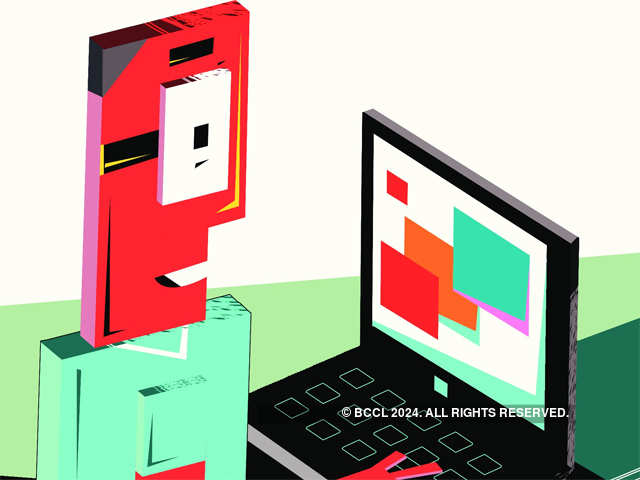
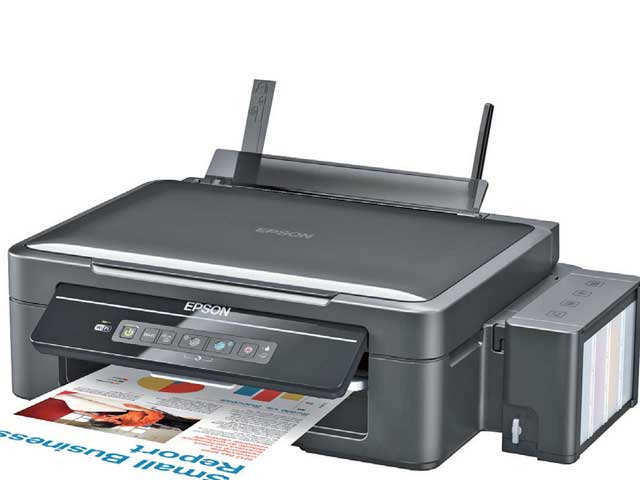
 Get your daily dose of news with striking images from India and around the world
Get your daily dose of news with striking images from India and around the world
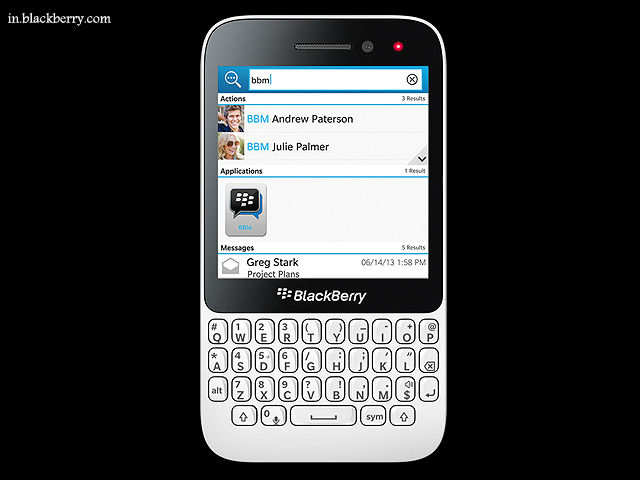

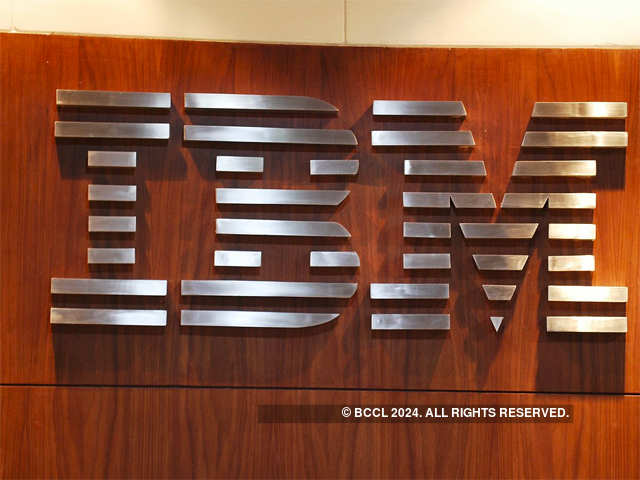
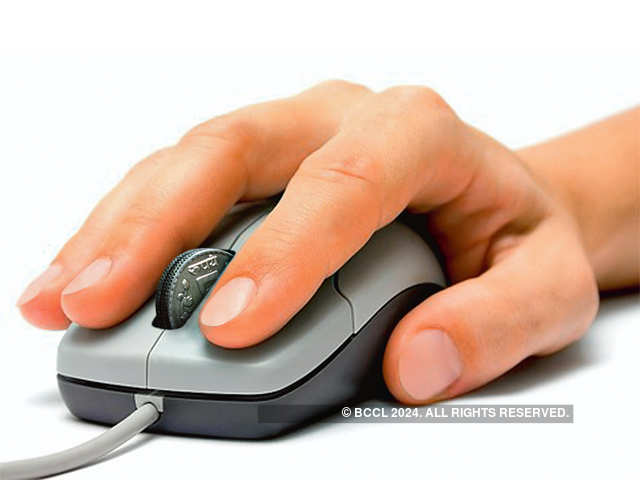
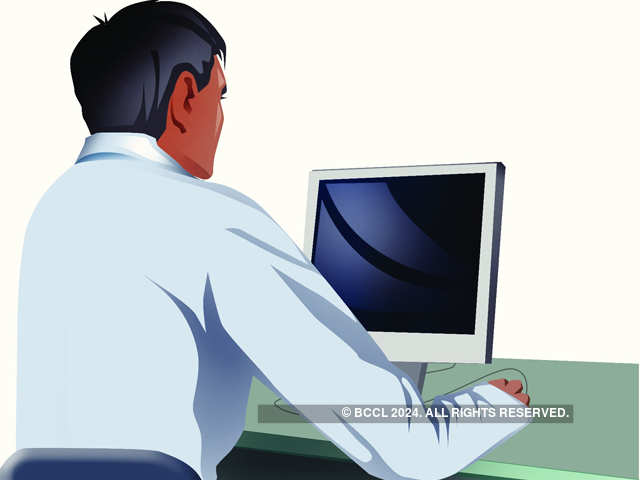

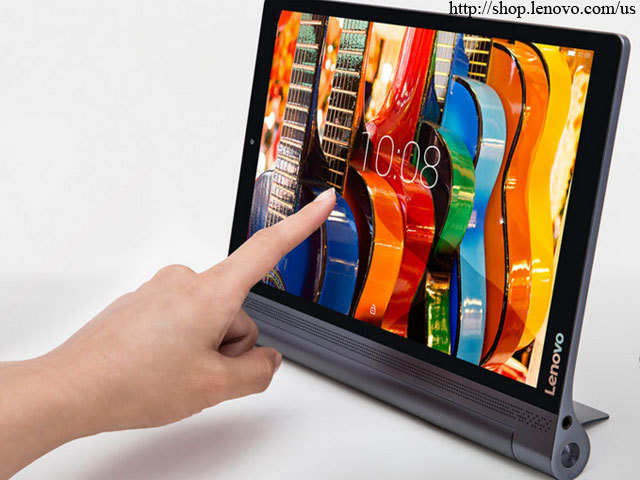
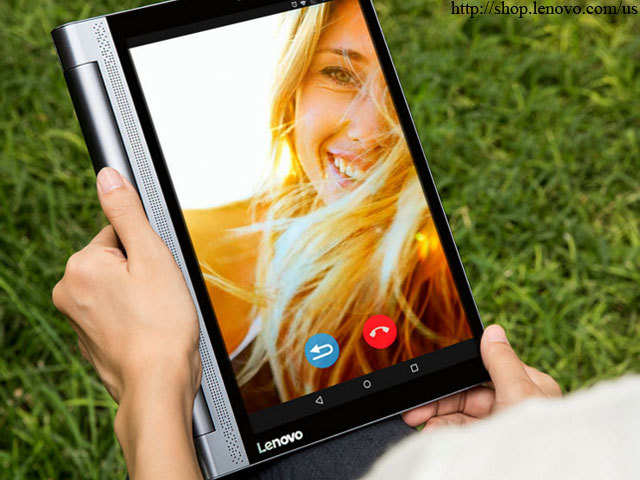
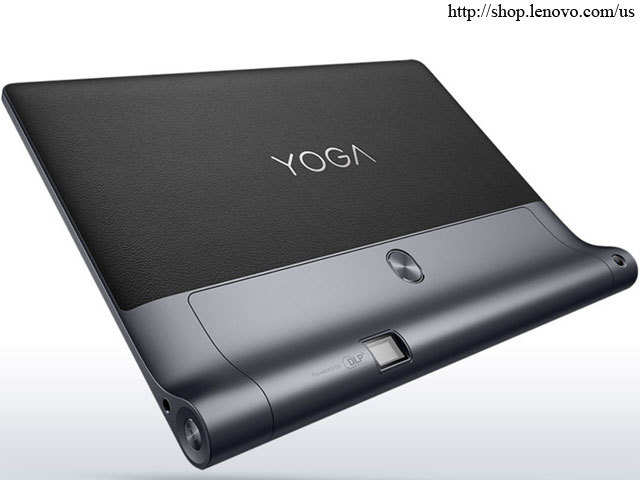
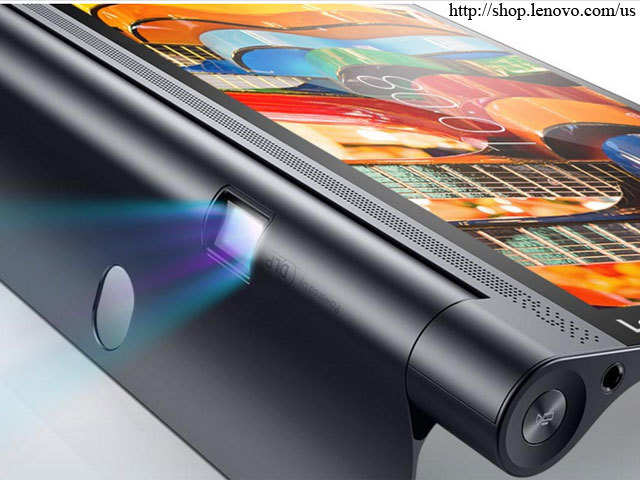
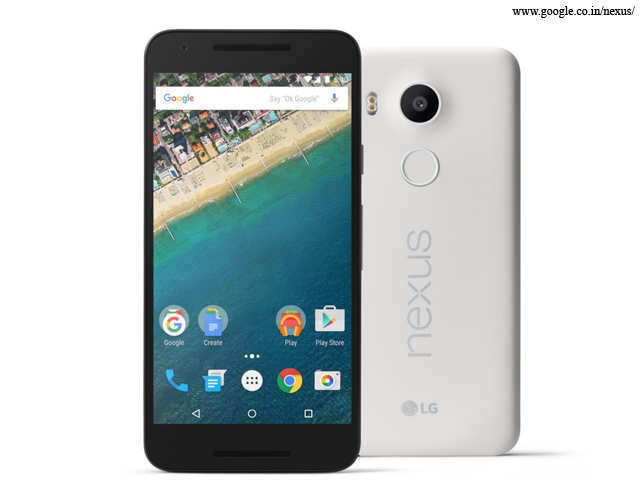
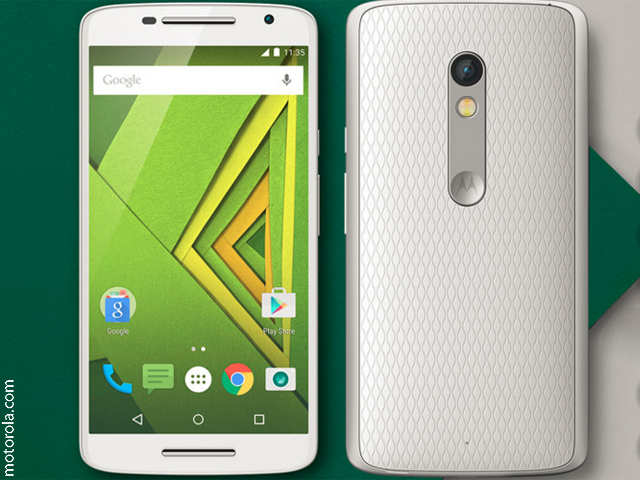


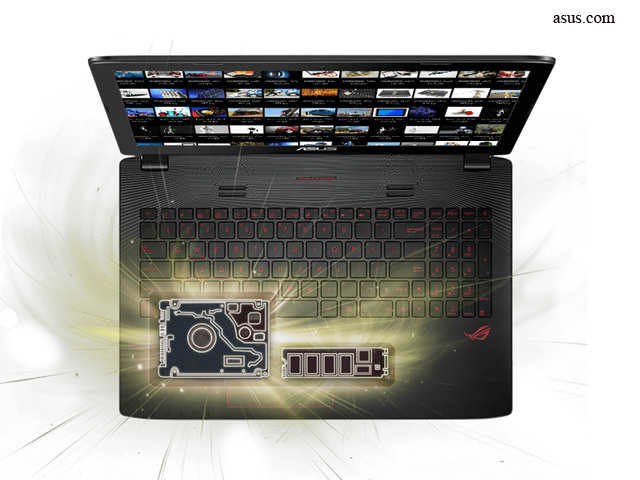


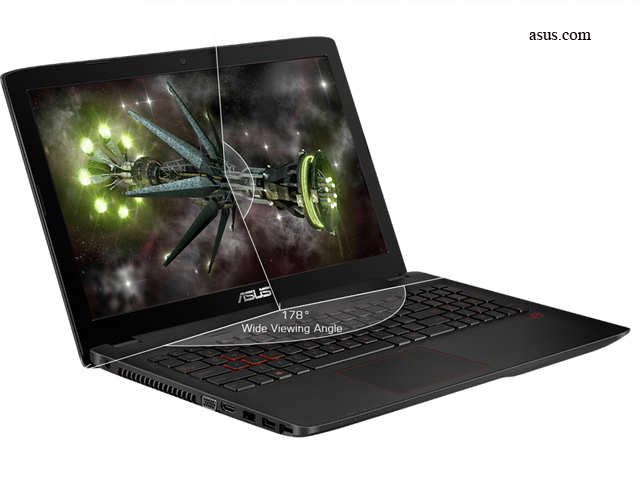


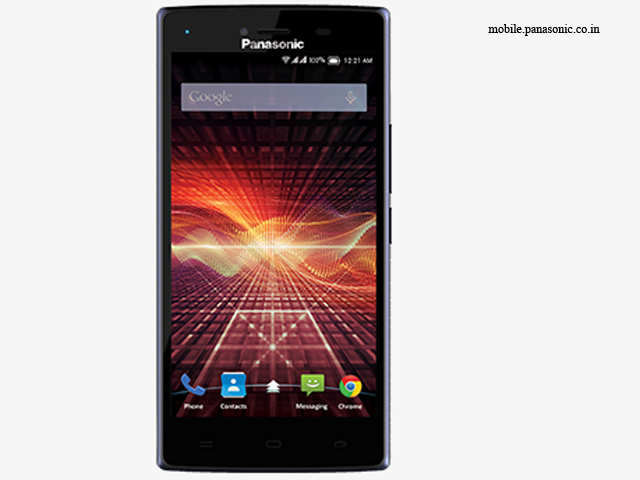



Updated: 16 Mar 2016, 06:44 AM IST

12 weird but true facts about technology
Text: Hitesh Raj Bhagat, ET bureau
You can't argue with the relentless march of technology but you can marvel at some of the absurdities from the past few decades.
ET rounds up a bunch of facts and anecdotes that sound so ridiculous, you'll question their authenticity.
You can't argue with the relentless march of technology but you can marvel at some of the absurdities from the past few decades.
ET rounds up a bunch of facts and anecdotes that sound so ridiculous, you'll question their authenticity.
1/11
BCCL

Changing fonts can save printer ink
That's
right, fonts are not created equal. People create different kinds of
fonts for all kinds of reasons: to convey a message, for decoration,
embellishment or as iconography.
The theory is, if you use a 'lighter' font (with a lighter stroke), you'll use slightly less ink per page. Based on the assumption that you're only printing with inkjet printers that use the old style cartridges (not ink tanks, and not tonerbased laser printers), you'll likely save about 10 per cent ink by switching to one of the lighter fonts.
Of course, the flipside to this argument is that as a home consumer, you'll never print enough volumes to actually see a benefit.
The theory is, if you use a 'lighter' font (with a lighter stroke), you'll use slightly less ink per page. Based on the assumption that you're only printing with inkjet printers that use the old style cartridges (not ink tanks, and not tonerbased laser printers), you'll likely save about 10 per cent ink by switching to one of the lighter fonts.
Of course, the flipside to this argument is that as a home consumer, you'll never print enough volumes to actually see a benefit.
2/11
Agencies

Email existed before the world wide web
You
probably don't even think before composing a one-line email message and
sending it. But it wasn't always so easy. There's an interesting clip
on YouTube: "How to send an Email – Database – 1984". This was from a
tech TV show called Database and the presenters demonstrated what it
took to actually send an email back in those days.
You had to use a computer and a rotary telephone to connect to a service called Micronet. This was pre-WWW, so there were no URLs, just numbered webpages. For emails, the webpage number was 7776.
You had to use a computer and a rotary telephone to connect to a service called Micronet. This was pre-WWW, so there were no URLs, just numbered webpages. For emails, the webpage number was 7776.
3/11
BCCL
Subscribe to: Slideshow Newsletter

QWERTY was designed to slow you down
There
are actually two theories to this. The first one starts to make sense
when you look at manual typewriters. If someone typed too fast, the keys
would jam. QWERTY placed common alphabets at a distance from each other
and slowed typists down.
Another theory is that telegraph operators designed the QWERTY layout because it was easier (and faster) to decipher Morse code.
Either way, there was no reason to keep using the layout, but it stuck and there was resistance to change. You can actually change your keyboard layout to the faster Dvorak layout in the language settings (or just buy a new Dvorak keyboard).
Another theory is that telegraph operators designed the QWERTY layout because it was easier (and faster) to decipher Morse code.
Either way, there was no reason to keep using the layout, but it stuck and there was resistance to change. You can actually change your keyboard layout to the faster Dvorak layout in the language settings (or just buy a new Dvorak keyboard).
4/11

92 per cent of the world's currency is digital
This
means that most of the money you earn, transact with, use to buy
goods/services and so on exists only on computers and hard drives. Only
an estimated 8 per cent of currency globally is physical money.
All the black money piles come from within this 8 per cent. This is a fair estimate that economists seem to agree on though, not an exact figure. This low percentage seems absurd but when you stop to think, it makes sense considering that most large transactions are done electronically anyway.
Banks store electronically too and the 92 per cent includes all kinds of transactions done using credit/debit cards and wire transfers. Might be a good idea to revisit all those hacker movies where a nerdy computer hacker manages to siphon billions off in just a few minutes.
All the black money piles come from within this 8 per cent. This is a fair estimate that economists seem to agree on though, not an exact figure. This low percentage seems absurd but when you stop to think, it makes sense considering that most large transactions are done electronically anyway.
Banks store electronically too and the 92 per cent includes all kinds of transactions done using credit/debit cards and wire transfers. Might be a good idea to revisit all those hacker movies where a nerdy computer hacker manages to siphon billions off in just a few minutes.
5/11
BCCL
Domain name registrations were free till 1995
Nobody
really knew what the internet was capable of back then and this was a
huge opportunity for people to own all kinds of do domain names. It was
in 1995 that a company called Network Solutions was granted the rights
to charge people for domain names. And it was expensive too: prices
typically started at $100 per two years of registration.
As much as 30 per cent of this was a fee that went to the National Science Foundation to create an 'Internet Intellectual Infrastructure Fund'. This fee was later reversed in 1997, bringing the charge down to $70 for two years.
As much as 30 per cent of this was a fee that went to the National Science Foundation to create an 'Internet Intellectual Infrastructure Fund'. This fee was later reversed in 1997, bringing the charge down to $70 for two years.
6/11
BCCL

In 1956, 5 megabytes (5MB) of data weighed a ton
It was 1956 when IBM launched RAMAC, the first computer with something like a hard drive that we use today.
By hard drive, we mean something that used magnetic disks - a moving head was used to access and write that data. At the time, it was considered a massive leap in massstorage technology because it signified a shift: from punch cards and magnetic tape (which stored data sequentially) to randomly accessible hard drives.
RAMAC itself stood for Random Access Method of Accounting & Control. The whole cabinet weighed over 1000kg and the 5MP data was spread over 50 huge aluminium disks, coated with magnetic iron oxide. The disks rotated at a speed of 1200rpm and the machines were leased for $3,200 per month back in the day.
By hard drive, we mean something that used magnetic disks - a moving head was used to access and write that data. At the time, it was considered a massive leap in massstorage technology because it signified a shift: from punch cards and magnetic tape (which stored data sequentially) to randomly accessible hard drives.
RAMAC itself stood for Random Access Method of Accounting & Control. The whole cabinet weighed over 1000kg and the 5MP data was spread over 50 huge aluminium disks, coated with magnetic iron oxide. The disks rotated at a speed of 1200rpm and the machines were leased for $3,200 per month back in the day.
7/11
BCCL

The X-Y position indicator for displays – a.k.a The Mouse
When
the first pointing device was invented in the early 60's by Douglas
Engelbart and Bill English (they were part of the Stanford Research
Institute), it was called the X-Y Position Indicator for Display Systems
(referring of course, to the X & Y axes).
It was first used with the Xerox Alto computer and demonstrated in 1968 by Engelbart in what is called the 'Mother of all demos' (check it out on YouTube). In 1968, Engelbart showed off word processing, graphics, windows, file linking and control using a 'mouse' – all these things made their way into modern computers.
Engelbart was also responsible for the name mouse, coined simply because the cable sticking out the end of the device reminded him of a rodent's tail.
It was first used with the Xerox Alto computer and demonstrated in 1968 by Engelbart in what is called the 'Mother of all demos' (check it out on YouTube). In 1968, Engelbart showed off word processing, graphics, windows, file linking and control using a 'mouse' – all these things made their way into modern computers.
Engelbart was also responsible for the name mouse, coined simply because the cable sticking out the end of the device reminded him of a rodent's tail.
8/11
BCCL

Russia built a computer that ran on water: in 1936
Before
the miniaturisation of transistors, computers had a much more visible
system of counting: things like gears, pivots, beads and levers were
often used and they needed some sort of power source to function.
Vladimir Lukyanov built something like this in 1936 but he used water to create a computer that solved partial differential equations. In images of the Lukyanov computer, you'll see a complex system of interconnected tubes filled with water.
Adjusting taps and plugs altered the flow of water (and changed variables) while the end result was seen by measuring the level of water in certain tubes. It was also called a Water Integrator and was originally designed to solve the problem of cracking in concrete. It's now found in Moscow's Polytechnic Museum.
Vladimir Lukyanov built something like this in 1936 but he used water to create a computer that solved partial differential equations. In images of the Lukyanov computer, you'll see a complex system of interconnected tubes filled with water.
Adjusting taps and plugs altered the flow of water (and changed variables) while the end result was seen by measuring the level of water in certain tubes. It was also called a Water Integrator and was originally designed to solve the problem of cracking in concrete. It's now found in Moscow's Polytechnic Museum.
9/11
BCCL

QWERTY vs ABC layouts in advanced graphing calculators
Before
smartphones, there was a time when digital diaries and advanced
calculators were popular. They could be used to store simple forms of
data and to perform calculations that students could use while solving
differential equations apart from algebra and calculus capabilities.
While advanced calculators were 'allowed' to be taken into exam halls, many tests banned devices if they had QWERTY keyboards, simply because they fitted into the traditional definition of a 'computer'.
Texas Instruments solved the problem by introducing graphing calculators with keyboards that had an alphabetical layout.
While advanced calculators were 'allowed' to be taken into exam halls, many tests banned devices if they had QWERTY keyboards, simply because they fitted into the traditional definition of a 'computer'.
Texas Instruments solved the problem by introducing graphing calculators with keyboards that had an alphabetical layout.
10/11
BCCL
Wikipedia needs an army of anti-vandal bots
Wikipedia's
mission is to make knowledge freely available to anyone with access to
the Internet. However, anyone with internet can also sign up and edit
pages – which results in what they call vandalism (someone purposefully
altering facts with malice).
There is a very robust moderation system but there's only so much that a person can do, in terms of actively monitoring changes and correcting changes that vandals make.
That's where the bots — essentially computer programs — come in. The bots (like ClueBot-NG) keep a track of all changes made to any page and instantly revert back to the 'correct' version if a vandal decides to change things. About 1,941 bots are authorised for use on the 38,818,162 Wikipedia pages at last count.
There is a very robust moderation system but there's only so much that a person can do, in terms of actively monitoring changes and correcting changes that vandals make.
That's where the bots — essentially computer programs — come in. The bots (like ClueBot-NG) keep a track of all changes made to any page and instantly revert back to the 'correct' version if a vandal decides to change things. About 1,941 bots are authorised for use on the 38,818,162 Wikipedia pages at last count.
11/11
BCCL
Next Story
ET Review: Lenovo Yoga Tab 3 Pro
ET Review: Lenovo Yoga Tab 3 Pro
Text: Hitesh Bhagat, ET Bureau
Many would say that tablets have generally reached saturation point –—there’s not too much innovation happening and people tend to keep their tablets for a lot longer as compared to phones. That’s why we think that any extra features a tablet can offer are welcome.
This device looks familiar because it’s an update to the Yoga Tab 2 Pro, which we reviewed at about the same time last year.
Many would say that tablets have generally reached saturation point –—there’s not too much innovation happening and people tend to keep their tablets for a lot longer as compared to phones. That’s why we think that any extra features a tablet can offer are welcome.
This device looks familiar because it’s an update to the Yoga Tab 2 Pro, which we reviewed at about the same time last year.
1/6

Premium quality
It
keeps the same premium quality construction, nifty design and improves
the headlining feature: the built in LED projector. The last time
around, you had to sit in a fairly dark room to enjoy the projector but
the increased brightness (50 lumens vs 30 before) makes it a lot more
usable.
You can easily have a 50-inch screen in a dark room.
You can easily have a 50-inch screen in a dark room.
2/6

Projector
The
projector is housed in the rotatable spine (which also houses the
battery). And like before, the projector uses Texas Instruments’ DLP
technology with an LED light source and can be switched on instantly via
the dedicated button.
You can choose to have both the tablet screen and projector on at the same time or just use the projector mode to save battery life. So what can you do with a projector built into a tablet?
One person we showed it to said he’d like to lie in bed and watch movies on the bedroom ceiling. No problem. Someone else wanted to use a white wall for an impromptu photo slideshow. Use it for business presentations — you won’t need to carry anything else.
Throw in a bit of big screen binge watching with Netflix and big screen gaming (you can pair it with any Bluetooth gamepad for this) and you’ve got a tablet that many in the family will enjoy.
You can choose to have both the tablet screen and projector on at the same time or just use the projector mode to save battery life. So what can you do with a projector built into a tablet?
One person we showed it to said he’d like to lie in bed and watch movies on the bedroom ceiling. No problem. Someone else wanted to use a white wall for an impromptu photo slideshow. Use it for business presentations — you won’t need to carry anything else.
Throw in a bit of big screen binge watching with Netflix and big screen gaming (you can pair it with any Bluetooth gamepad for this) and you’ve got a tablet that many in the family will enjoy.
3/6

Spine makes it easier to hold
The
materials used are great and we especially like the leather-like back
panel. The spine is a ‘love it or hate it’ kind of thing.
Some people hated that it doesn’t adhere to the conventional tablet design — others appreciate it for the thoughtful design, the way the spine makes it easier to hold and the sturdy flip out stand that props it up on a table. We tend to agree with the latter.
Some people hated that it doesn’t adhere to the conventional tablet design — others appreciate it for the thoughtful design, the way the spine makes it easier to hold and the sturdy flip out stand that props it up on a table. We tend to agree with the latter.
4/6

Android 5.1 with a few Lenovo tweaks
Thanks
to the 4-speaker JBL soundbar (front facing speakers, located under the
screen) and Dolby Atmos enhancements, it can get pretty loud.
The screen also has a little trick — it can be used with almost any conductive item: pens, metallic objects like keys or even cutlery. Screen quality is excellent too with nice colours, high brightness and contrast.
The software is Android 5.1 with a few Lenovo tweaks. There’s a multi-window option, a smart side bar and some nice animations.
The screen also has a little trick — it can be used with almost any conductive item: pens, metallic objects like keys or even cutlery. Screen quality is excellent too with nice colours, high brightness and contrast.
The software is Android 5.1 with a few Lenovo tweaks. There’s a multi-window option, a smart side bar and some nice animations.
5/6
Excellent battery
Battery
life is excellent, thanks to the large battery. It can easily do 10
hours of use on a single charge (or you can watch two movies back to
back on the projector only).
A couple of things we didn’t like — primary camera performance is generally slow and clunky, with not very good results. The front camera is fixed focus. Plus there are pre-loaded apps like McAfee, Evernote, Netflix and some other Lenovo apps.
These things keep it from getting a perfect score. We would have also liked to be able to fine tune the screen colour temperature, saturation etc — on a screen this good, this is sorely missed.
Overall, this is still a great Android tablet — something that’s worth upgrading to.
A couple of things we didn’t like — primary camera performance is generally slow and clunky, with not very good results. The front camera is fixed focus. Plus there are pre-loaded apps like McAfee, Evernote, Netflix and some other Lenovo apps.
These things keep it from getting a perfect score. We would have also liked to be able to fine tune the screen colour temperature, saturation etc — on a screen this good, this is sorely missed.
Overall, this is still a great Android tablet — something that’s worth upgrading to.
6/6
Next Story
5 underrated Android smartphones that are worth buying
5 underrated Android smartphones that are worth buying
Text: Debashis Sarkar, TOI Tech
The intense competition in the Indian smartphone market many a times results in some good smartphones not getting the due attention.
As the budget smartphone segment is largely dominated by few Chinese new entrants, the smartphones in the mid-range segment struggle to compete with the marketing hype made created by these smartphone makers.
Here are 5 such smartphones, which may not have been bestsellers, but surely boast of premium features and are a good buy at the current price.
The intense competition in the Indian smartphone market many a times results in some good smartphones not getting the due attention.
As the budget smartphone segment is largely dominated by few Chinese new entrants, the smartphones in the mid-range segment struggle to compete with the marketing hype made created by these smartphone makers.
Here are 5 such smartphones, which may not have been bestsellers, but surely boast of premium features and are a good buy at the current price.
1/6

Google Nexus 5X
The
LG made Nexus 5X is a great choice for someone looking to buy a branded
smartphone under Rs 30,000. After receiving several price cuts (of
late), it is a killer deal especially for Nexus fanboys.
The 16GB model costs Rs 27,900 while the 32GB version is available at a price of Rs 31,900. Both the smartphones are available at a limited-period discount of Rs 4,000.
It has a 5.2-inch FHD screen and runs 64-bit Snapdragon 808 processor with 2GB RAM. Other key specs include 12.3MP rear camera, 4K video support, Android Marshmallow, 4G support, 2,700mAh battery.
The 16GB model costs Rs 27,900 while the 32GB version is available at a price of Rs 31,900. Both the smartphones are available at a limited-period discount of Rs 4,000.
It has a 5.2-inch FHD screen and runs 64-bit Snapdragon 808 processor with 2GB RAM. Other key specs include 12.3MP rear camera, 4K video support, Android Marshmallow, 4G support, 2,700mAh battery.
2/6

Motorola (Moto) X Play
Motorola
X Play, better known as Moto X Play, costs Rs 18,499 and is a good buy
for someone looking for a tough 5.5-inch pure Android smartphone.
It has a 5.5-inch AMOLED Full HD touch screen, Android 5.1.1 (Lollipop) OS, 1.7GHz octa-core 64-bit Snapdragon 615 processor, 2GB RAM, 32GB storage, microSD card support, 21MP rear camera, 5MP front camera, 3,630mAh battery and has water-resistant nano-coating, too.
It has a 5.5-inch AMOLED Full HD touch screen, Android 5.1.1 (Lollipop) OS, 1.7GHz octa-core 64-bit Snapdragon 615 processor, 2GB RAM, 32GB storage, microSD card support, 21MP rear camera, 5MP front camera, 3,630mAh battery and has water-resistant nano-coating, too.
3/6

HTC One A9
HTC
One A9 with the iPhone 6-like design is available for a price of around
Rs 30,000 (online as well in retail stores). It sports a 5-inch full HD
AMOLED display and is powered by Qualcomm Snapdragon 617 processor with
64-bit octa-core CPU.
The smartphone has a 13MP rear camera with support for 1080p video recording and ultraPixel front-facing camera. This one is a powerful phone that has lot of software goodies inside.
The smartphone has a 13MP rear camera with support for 1080p video recording and ultraPixel front-facing camera. This one is a powerful phone that has lot of software goodies inside.
4/6
BCCL

Huawei Honor 7
Huawei’s
latest flagship smartphone, Honor 7, packs a lot of punch for Rs
22,999. It sports a 5.2-inch full-HD(1080x1920p) touch display with
Gorilla Glass protection.
It’s powered by a 2.2GHz Huawei HiSilicon Kirin 935 processor, Mali-T628 GPU and 3GB RAM. It comes with 16GB storage expandable up to 128GB via a microSD card.
It’s powered by a 2.2GHz Huawei HiSilicon Kirin 935 processor, Mali-T628 GPU and 3GB RAM. It comes with 16GB storage expandable up to 128GB via a microSD card.
5/6
Samsung Galaxy A8
Samsung
Galaxy A8 at a price of Rs 25,990 is a good deal. It is among Samsung’s
thinnest smartphones till date. It sports a 5.7-inch full
HD(1080x1920p) Super AMOLED display.
Powered by a 1.5GHz 64-bit Qualcomm Snapdragon octa-core processor and 2GB RAM, the phone comes with 32GB storage, with a microSD card slot for expansion. Another great offering by Samsung that is not talked about much.
Powered by a 1.5GHz 64-bit Qualcomm Snapdragon octa-core processor and 2GB RAM, the phone comes with 32GB storage, with a microSD card slot for expansion. Another great offering by Samsung that is not talked about much.
6/6
Next Story
Asus ROG GL552JX review: One of the best in the budget segment
Asus ROG GL552JX review: One of the best in the budget segment
Text: Bodhisatwa Ray, TOI Tech
The mid ranged gaming laptop segment is a tough turf for many companies, who try to provide the best they can within an affordable price range.
Today we have a beast of a machine that chewed on some of the best games released yet and came out with flying colours.
This is the ASUS ROG GL552JX that is priced at Rs 74,500, and here's the review of this gaming mammoth.
The mid ranged gaming laptop segment is a tough turf for many companies, who try to provide the best they can within an affordable price range.
Today we have a beast of a machine that chewed on some of the best games released yet and came out with flying colours.
This is the ASUS ROG GL552JX that is priced at Rs 74,500, and here's the review of this gaming mammoth.
1/6

Design and Display
The
ASUS ROG GL552JX laptop is one of the mid-lower end laptops in the ROG
series of Asus and does not sport a metallic body. It is made of plastic
fibre and has a mesh texture on the top with a brush metallic finish
down the middle.
This area has the Asus and the ROG logo, which lights up. Though the top half with the screen is not absolutely firm, the laptop does have a solid feel to its build.
The backlit keyboard is red in colour and the WASD keys have a highlight on them. Both the keyboard and the touchpad are quite comfortable to use for long hours.
This area has the Asus and the ROG logo, which lights up. Though the top half with the screen is not absolutely firm, the laptop does have a solid feel to its build.
The backlit keyboard is red in colour and the WASD keys have a highlight on them. Both the keyboard and the touchpad are quite comfortable to use for long hours.
2/6

Full HD IPS display
The
ASUS ROG GL552JX has a 15.6-inch 1920 x 1080 full HD IPS display with
great viewing angles, vibrant colours and is bright enough to be seen in
extreme light conditions without any reflections.
So overall the display is great for gaming. The ASUS ROG GL552JX is by no means a slim laptop and can be called bulky to an extent with a weight of 2.6 Kg.
The sides of the laptop have the audio, USB, HDMI and VGA ports along with the fan exhaust and the DVD drive.
So overall the display is great for gaming. The ASUS ROG GL552JX is by no means a slim laptop and can be called bulky to an extent with a weight of 2.6 Kg.
The sides of the laptop have the audio, USB, HDMI and VGA ports along with the fan exhaust and the DVD drive.
3/6

Performance
The
Asus ROG GL552JX laptop uses the 4th gen Intel Core i7 4750HQ processor
with 8GB DDR3 RAM and has a 4GB DDR3 GTX950M GPU. The graphics unit
handles games like Call of Duty Advanced Warfare and Assassin's Creed
Syndicate with ease.
We ran both the games on high settings and saw some decent FPS. There were some frame drops in ultra setting, however the games were quite playable and we enjoyed every bit of it.
The Asus ROG GL552JX laptop scored an impressive 14,632 points on 3DMARK Vantage. This is definitely among the best scores we have seen in the mid-end gaming laptop category.
The PCMARK 7 score was only 3,542 (which is lower side). The reason might be the 4th gen processor and just 8 GB RAM. Nevertheless, this would not affect gaming much that the laptop is targeted at.
We ran both the games on high settings and saw some decent FPS. There were some frame drops in ultra setting, however the games were quite playable and we enjoyed every bit of it.
The Asus ROG GL552JX laptop scored an impressive 14,632 points on 3DMARK Vantage. This is definitely among the best scores we have seen in the mid-end gaming laptop category.
The PCMARK 7 score was only 3,542 (which is lower side). The reason might be the 4th gen processor and just 8 GB RAM. Nevertheless, this would not affect gaming much that the laptop is targeted at.
4/6

Chiclit keyboard
The
chiclit keyboard is surprisingly good and has excellent response rate,
but the speakers that are located above the keyboard are a bit of a
letdown. The sound is very basic and has no highlights either in mids or
highs. We recommend using your gaming headphones for the ultimate
gaming experience.
The Asus ROG GL552JX laptop also comes with Windows 10 64bit edition that employs the basic Windows UI. For storage the Asus ROG GL552JX has a 1TB 7200RPM hard drive that should prove to be large enough to easily encompass your heavy duty game files.
On the flipside, the laptop does not have dedicated SSD to house the OS which many other laptops in this price range use.
The Asus ROG GL552JX has a 4 cell battery that lasts close to 2 hours while gaming, but the performance gets affected if one does not use constant wall power. Users need to plug it to the wall socket to experience top-notch performance.
The Asus ROG GL552JX laptop also comes with Windows 10 64bit edition that employs the basic Windows UI. For storage the Asus ROG GL552JX has a 1TB 7200RPM hard drive that should prove to be large enough to easily encompass your heavy duty game files.
On the flipside, the laptop does not have dedicated SSD to house the OS which many other laptops in this price range use.
The Asus ROG GL552JX has a 4 cell battery that lasts close to 2 hours while gaming, but the performance gets affected if one does not use constant wall power. Users need to plug it to the wall socket to experience top-notch performance.
5/6
Verdict
The
Asus ROG GL552JX is a well balanced laptop when it comes to gaming and
definitely offers value for money. When we compare the specs to
competitors like Lenovo, the ASUS ROG GL552JX laptop definitely comes
out on top considering they are offering a better price.
6/6
Next Story
Samsung Galaxy S7: Should Galaxy S6 users upgrade?
Samsung Galaxy S7: Should Galaxy S6 users upgrade?
Text: Debashis Sarkar, TOI Tech
The new flagships from Samsung -- Galaxy S7 and S7 edge -- will officially go on sale from March 18 in India. Market experts have already stated that the timing and pricing of the new S7 smartphones is a clever competitive move from Samsung.
However, consumers -- many who are yet to get a hang of the earlier S6 series -- feel it is too early to consider the new flagships. Also, those who already use any of the S6 series smartphones might consider waiting a bit before upgrading.
So, is it too early to think about the Galaxy S7? Or should you really look at upgrading now? Here are 4 things you need to keep in mind...
The new flagships from Samsung -- Galaxy S7 and S7 edge -- will officially go on sale from March 18 in India. Market experts have already stated that the timing and pricing of the new S7 smartphones is a clever competitive move from Samsung.
However, consumers -- many who are yet to get a hang of the earlier S6 series -- feel it is too early to consider the new flagships. Also, those who already use any of the S6 series smartphones might consider waiting a bit before upgrading.
So, is it too early to think about the Galaxy S7? Or should you really look at upgrading now? Here are 4 things you need to keep in mind...
1/3
Agencies

Software: Android M update expected
Samsung
is yet to upgrade all S6 series smartphones in the country to Android
Marshmallow. Once the upgrade is complete, there will hardly be any
differentiating factor when compared to S7 flagships which come with
Android Marshmallow-based TouchWiz out-of-the-box.
There is a possibility that Samsung might silently roll out an update for the older S6 edge and S6 edge+ later, offering the same Edge Screen features currently present in the S7 edge only.
Samsung had earlier done the same by introducing software features of the S6 edge+ to the smaller S6 edge.
In pic: Samsung Galaxy S6
There is a possibility that Samsung might silently roll out an update for the older S6 edge and S6 edge+ later, offering the same Edge Screen features currently present in the S7 edge only.
Samsung had earlier done the same by introducing software features of the S6 edge+ to the smaller S6 edge.
In pic: Samsung Galaxy S6
2/3

Price cuts and exchange offers
Samsung
is known for slashing prices of its high end smartphones drastically.
It had done the same with the early flagships models as well. The Galaxy
S6 and S6 edge started to sell for as low as Rs 36,000 and Rs 40,000
within just six months of launch at a price of Rs 49,900 and 58,900,
respectively.
Samsung's free Gear VR bundle for consumers who pre-ordered the new flagships is no doubt a good deal. But people who have not opted to pre-order might want to wait for a couple months.
While Samsung has no plans to introduce any buy-back or exchange offers, there might be such offers on leading e-commerce websites later.
In pic: Samsung Galaxy S6
Samsung's free Gear VR bundle for consumers who pre-ordered the new flagships is no doubt a good deal. But people who have not opted to pre-order might want to wait for a couple months.
While Samsung has no plans to introduce any buy-back or exchange offers, there might be such offers on leading e-commerce websites later.
In pic: Samsung Galaxy S6
3/3
Next Story
Panasonic Eluga Turbo Review
Panasonic Eluga Turbo Review
Text: Karan Bajaj, ET Bureau
The Eluga Turbo is a smartphone aimed at users who prefer a powerful smartphone in a stylish and compact size.
While the sub Rs12,000 segment has recently seen many new launches, a majority of them are phablets -that is where the Eluga Turbo stands out. Our review unit was the Midnight blue variant.
The Eluga Turbo is a smartphone aimed at users who prefer a powerful smartphone in a stylish and compact size.
While the sub Rs12,000 segment has recently seen many new launches, a majority of them are phablets -that is where the Eluga Turbo stands out. Our review unit was the Midnight blue variant.
1/6

Style
Thanks to the colour and 6.9mm slim design, the Eluga Turbo scores high marks for style.
The curved edges, unibody design and glossy finish gives the phone a smart look.
However, the glossy surface is also a fingerprint magnet and requires constant cleaning.
While the display impressed us in terms of viewing angles and sharpness, we felt that the brightness levels could have been better.
The curved edges, unibody design and glossy finish gives the phone a smart look.
However, the glossy surface is also a fingerprint magnet and requires constant cleaning.
While the display impressed us in terms of viewing angles and sharpness, we felt that the brightness levels could have been better.
2/6

Performance
Performance from the phone is fantastic, thanks to the octa-core MT6753 processor and 3GB RAM.
You get 25.1GB free storage out of 32GB which is enough for most users and there is an option of expanding it by microSD card using the hybrid sim slot.
Battery life is one of the main complaints we had with the phone the 2,350mAh bat tery barely managed to last a full day of use.
You get 25.1GB free storage out of 32GB which is enough for most users and there is an option of expanding it by microSD card using the hybrid sim slot.
Battery life is one of the main complaints we had with the phone the 2,350mAh bat tery barely managed to last a full day of use.
3/6

Interface
The
phone runs Panasonic's Fit Home user interface and keeping up with
other Panasonic's phones, you also get the option of switching to the
stock Lollipop interface.
The interface is zippy and comes with handy features including gesture support, power saving and an app manager where you can quickly clean up, uninstall apps, adjust notifications and manage data.
The interface is zippy and comes with handy features including gesture support, power saving and an app manager where you can quickly clean up, uninstall apps, adjust notifications and manage data.
4/6

Camera
Camera performance is a mixed bag.
While both front and rear camera manage to take good images in well lit scenarios, there is lots of visible noise.
Also, while the shutter speed is fast, it sometimes takes up to two seconds to focus. Video recording is supported in full HD and the recrording quality is good.
While both front and rear camera manage to take good images in well lit scenarios, there is lots of visible noise.
Also, while the shutter speed is fast, it sometimes takes up to two seconds to focus. Video recording is supported in full HD and the recrording quality is good.
5/6
Verdict
Price: Rs 10,999
Ratings: ****
Overall, we feel that Pansonic's Eluga Turbo is one of the few good 5-inch smartphones available in this price segment.
You can get similar performance from the Coolpad Note 3 Lite for Rs 6,999.
The CoolPad is also a 5-inch device and comes with a fingerprint scanner. Specifications: 5-inch IPS (1280 x720 pixels), octa core Mediatek MT6753 processor, 3GB RAM, 32GB storage, dual SIM, microSD slot, 13MP rear + 5MP front camera, 4G, WiFi, Android 5.1, 2,350mAh battery.
Ratings: ****
Overall, we feel that Pansonic's Eluga Turbo is one of the few good 5-inch smartphones available in this price segment.
You can get similar performance from the Coolpad Note 3 Lite for Rs 6,999.
The CoolPad is also a 5-inch device and comes with a fingerprint scanner. Specifications: 5-inch IPS (1280 x720 pixels), octa core Mediatek MT6753 processor, 3GB RAM, 32GB storage, dual SIM, microSD slot, 13MP rear + 5MP front camera, 4G, WiFi, Android 5.1, 2,350mAh battery.
6/6
- Get link
- X
- Other Apps

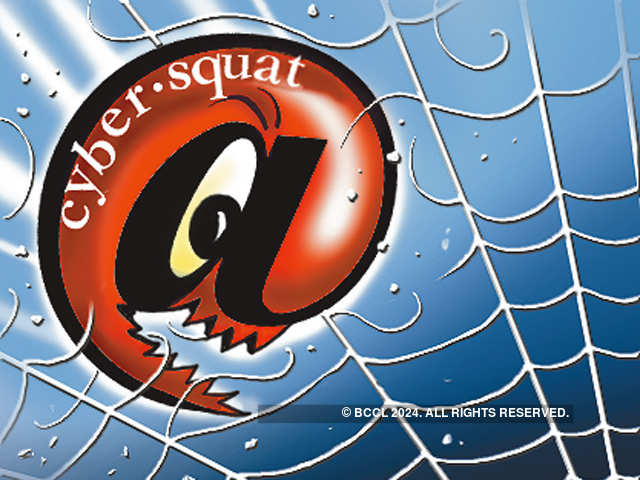


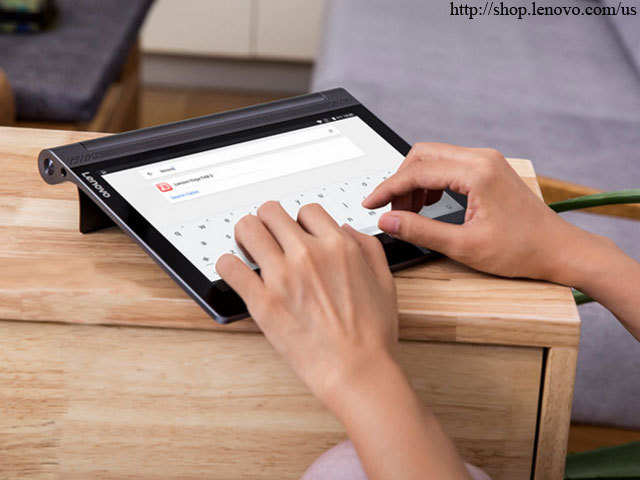

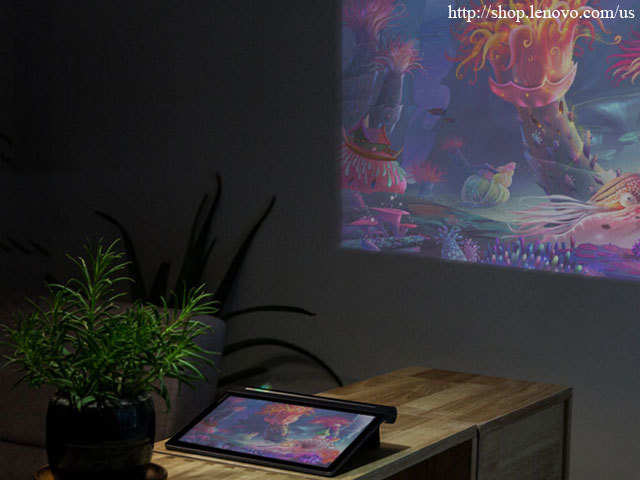


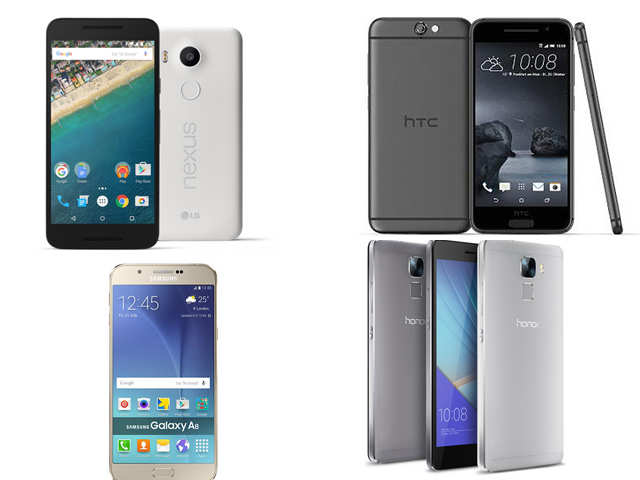




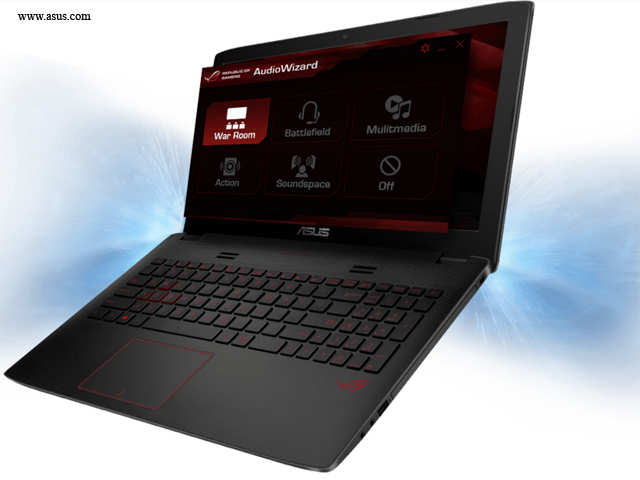

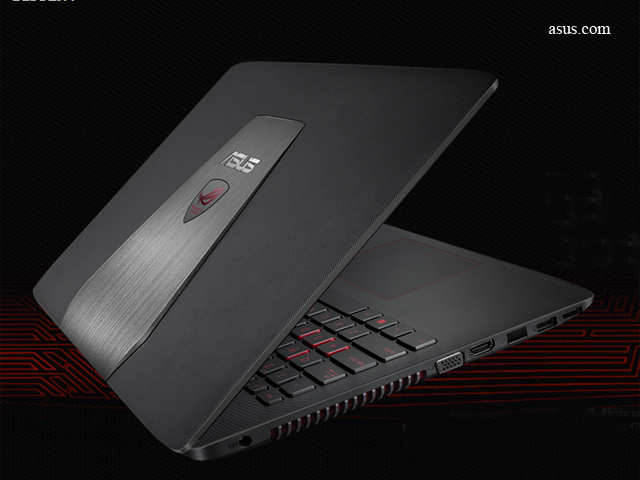
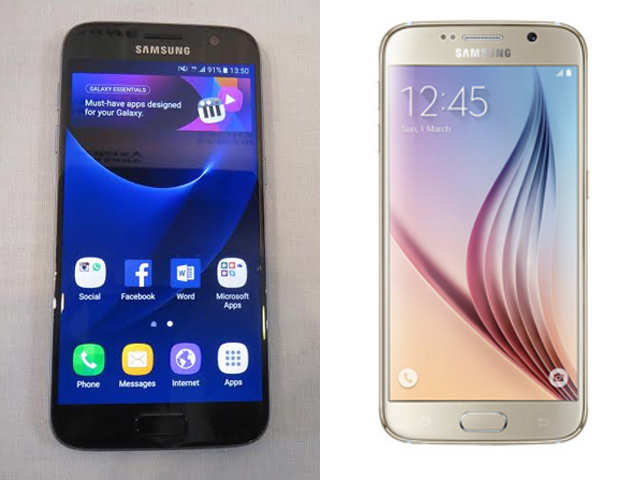

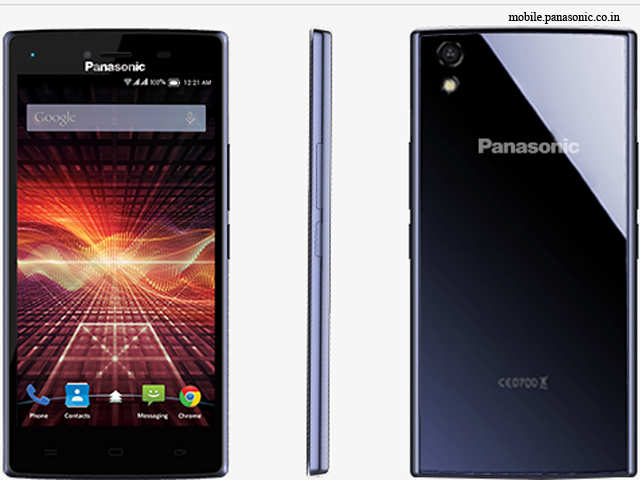



Comments
Post a Comment